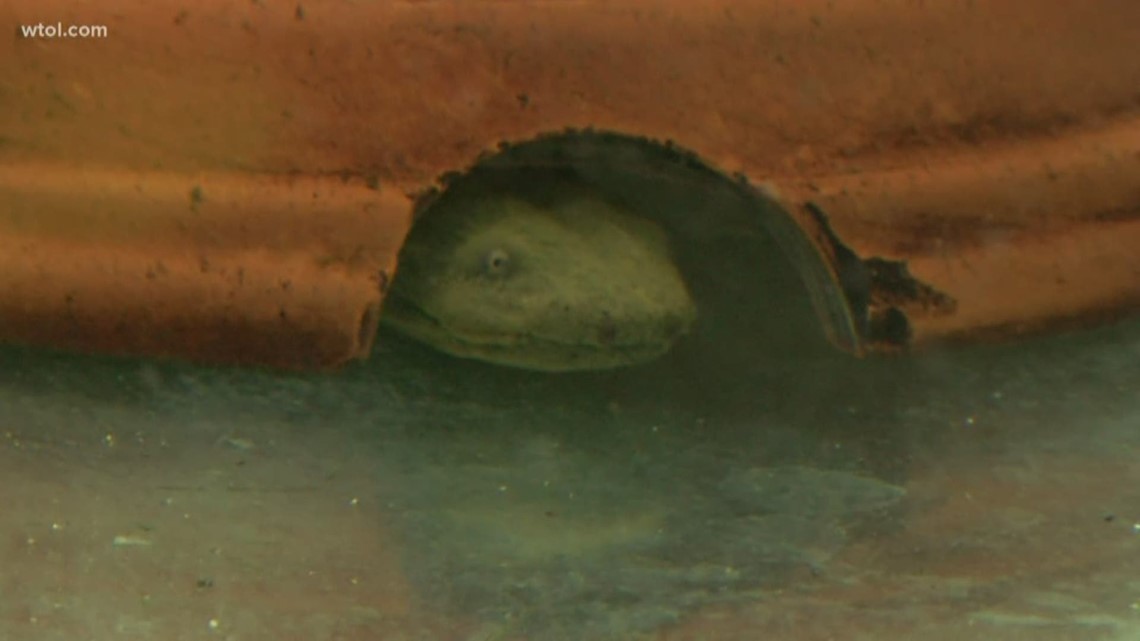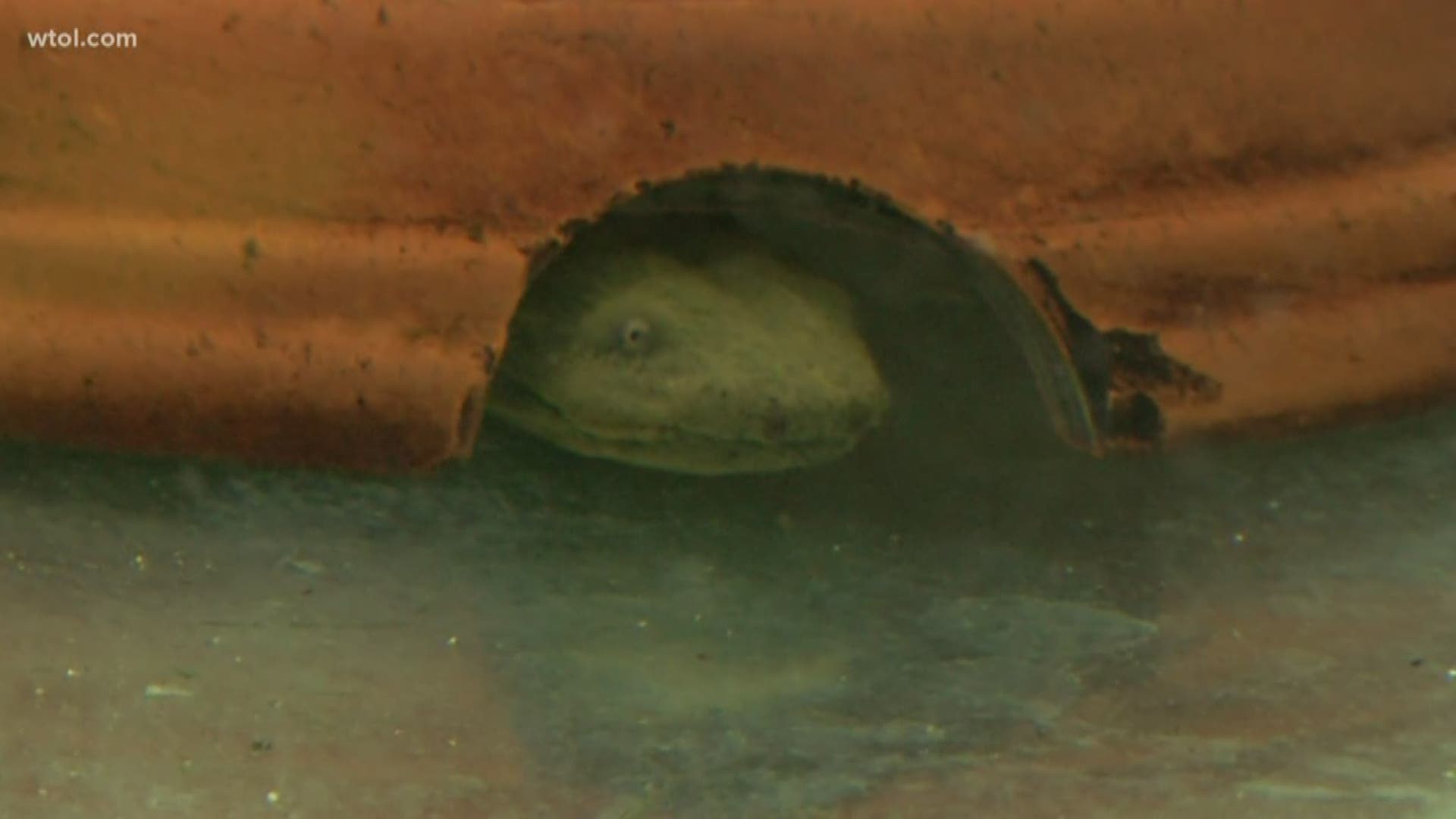PERRYSBURG, Ohio — Students in the small animal care class at Penta Career Center are doing more than caring for dogs, kittens and birds. They are helping to preserve a rare and endangered salamander in Ohio. In fact, it's Ohio's only native salamander and the largest salamander species in the nation.
It's called a Hellbender. Growing to more than 2 feet in length at maturity, they mostly live under rocks and other convenient hiding places in rivers. In recent decades their numbers have dwindled in the tributaries of the Ohio River watershed where they once flourished. Efforts have been underway now for several years to reintroduce the Hellbenders to those streams and Penta Career Center has partnered with the Toledo Zoo and the Division of Wildlife and the Ohio Hellbender Partnership in that mission.
For the past four years, students have been raising the amphibians after they hatch from eggs until they are about 2 to 3 years old, and are able to fend for themselves in their natural habitat. If they survive, the Hellbenders will live their entire lives hiding under rocks in fast moving streams living on crayfish and insects. These endangered salamanders are mostly brown in color and while they do have four very short legs for moving around, they have very few ways to defend themselves against predators except by hiding.


The small animal care classroom at Penta is piloted by teacher Nicole Costello, a former Toledo Zoo animal worker, who is excited about the program and pleased that her students take the project very seriously. This attention to detail is especially in the environment of the Hellbender lab, which is a special "clean" room that requires protective gowns, footwear, and rubber gloves and very clean hands.
"They have to scrub in when they go the lab and they're even counting to 30 to make sure their hands are clean enough to handle them," Costello said. "It's amazing the amount of detail the students take."
Costello says this is the fourth year for the program, which involves receiving the young hatches from the Toledo Zoo and then raising them in the laboratory aquariums, where potentially adverse pathogens are kept at a minimum.
Megan Wozniak, a senior last year, was part of a recent trip to southern Ohio to release the Hellbenders back into their natural river habitat. She said the experience was inspiring and exciting because the students had to dive down into the water to find a new home for the Hellbenders.
"You're kind of diving down looking for the right holes to put them in and checking to make sure they stay there. It's really different because the current is is pushing you along. It was difficult but fun."
Classmate Cassidy Behnfeldt agreed, saying the experience with the Hellbender project at Penta inspired her to pursue a career in wildlife conservation and education. She now is a wildlife biology major at Bowling Green State University.
"The public needs to know about animals like this that need our help," she said.
Over the last two years, Penta students have raised hundreds of the endangered amphibians, also known as "snot otters" because they are very slimy, which is one of their few defenses against predators.

